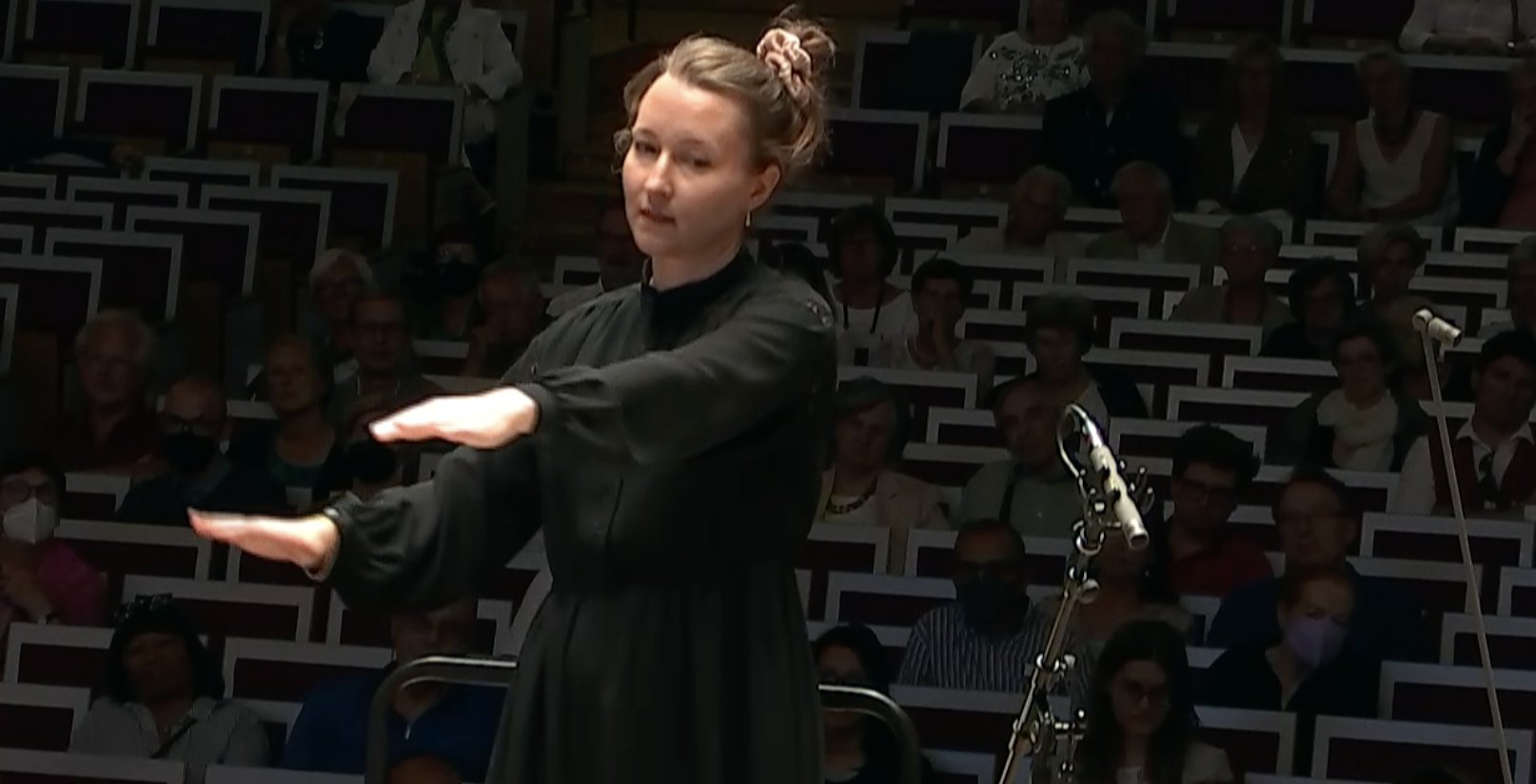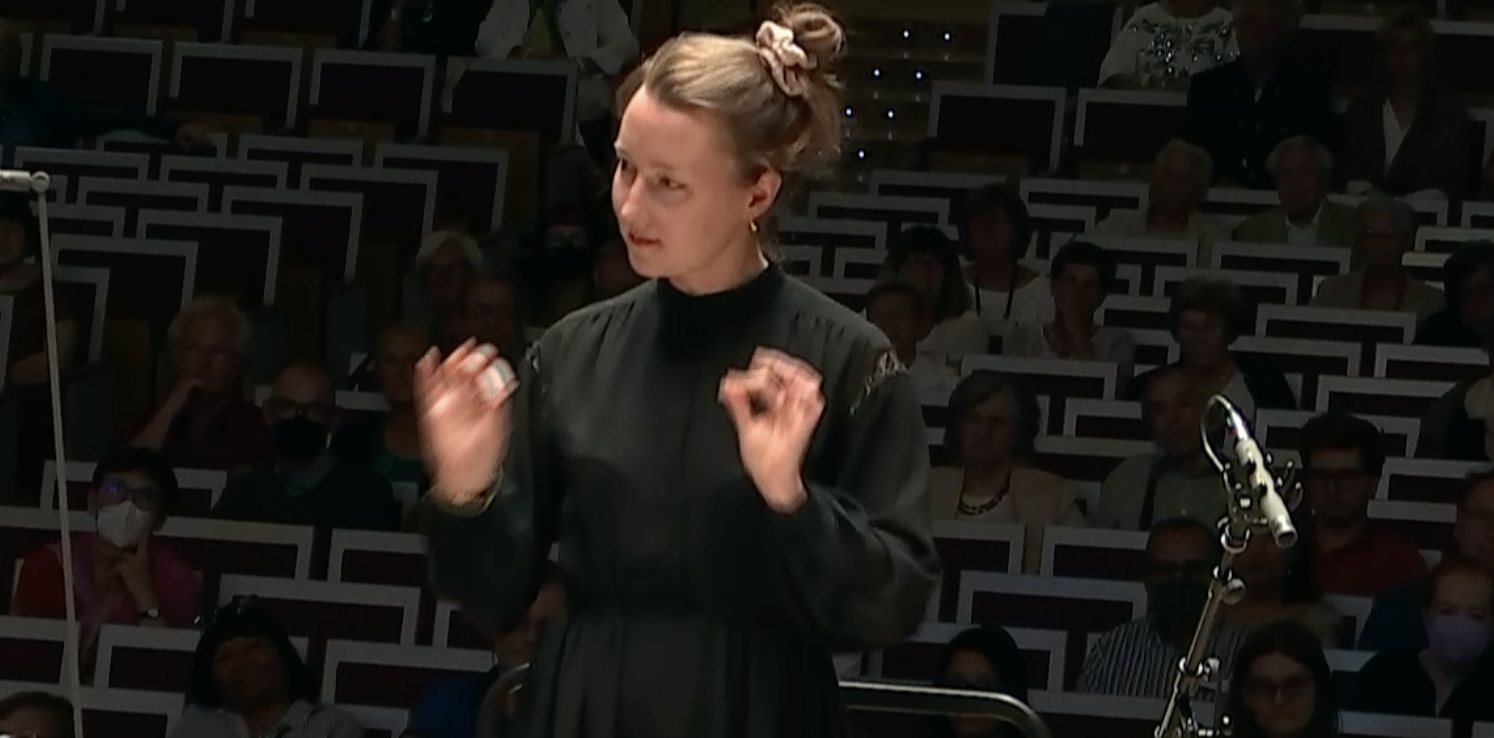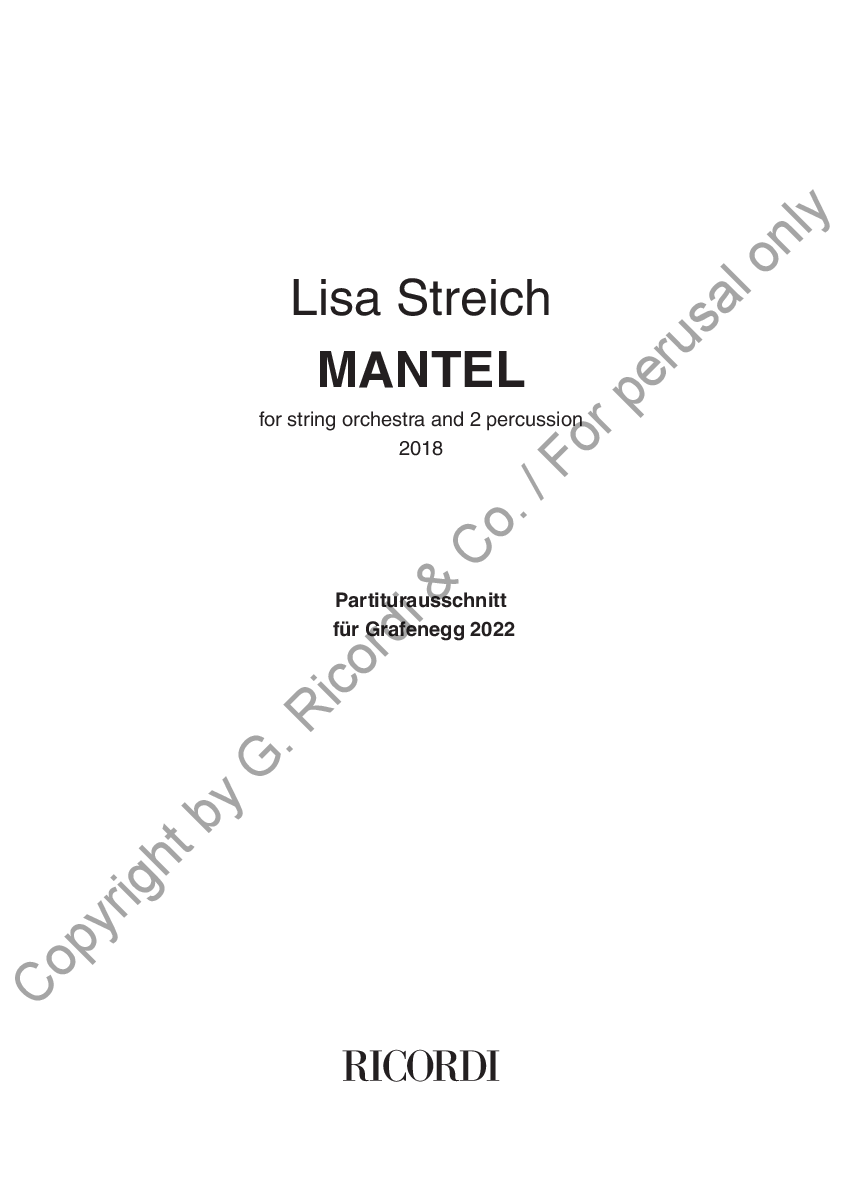SWITCHING PLACES
I have often wondered whether it is ethically justifiable to expose musicians and conductors to precarious situations, especially orchestral musicians who do not necessarily have control over the literature they are playing. In this report, I share my experience working on, and conducting MANTEL for string orchestra and two percussionists (2018) at the INK STILL WET composer conductor workshop in Grafenegg from 26. August - 4. September 2022, with the Tonkünstler Orchestra under the supervision of conductor Baldur Brönnimann and composer Georg Friedrich Haas. For this occasion I shortened the piece to 8 minutes, nevertheless trying to keep the different aspects of choreographical conducting in the piece. The score can be found all the way down on this site.
In this report, I outline my experience conducting MANTEL for string orchestra and 2 percussion (2018), which also involves choreographical conducting. At the INK STILL WET composer condcutor workshop in Grafenegg I had the opportunity and the desire to explore my own experiences with choreographical conducting. My aim was twofold: firstly, to understand how it feels to conduct choreographically, and secondly, to identify areas for improvement and potential challenges for the conductor that could be solved in the future. Moreover to be very close to the orchestra musicians to experience what the choreographical conducting does to them.
However, it must be taken into consideration that I am not a professional conductor, and my experiences cannot be equated with those of a professional conductor. I have never stood in front of an orchestra before. However, by the same token, this would mean that it should be reasonable to expect from condcutors if I would be able to manage it in some way.
DIARY
1st session:
I did not prepare the score well. We are working with a repetiteur. The first rehearsal with Baldur Brönnimann is all about getting through the musical text. I don't feel very competent. Nothing seems obvious and nothing automatically translates into the body.
2nd session:
The bar and time changes don’t come naturally or spontaneously to me. Tempo is easier to grasp, as I know the piece, but the meter changes still need to be ingrained in my physical memory.
3rd session:
I have practiced a lot, yesterday and today. I feel I can conduct the musical text. Now comes the choreographical moment on top. Baldur Brönnimann shows me a video of how I conduct. For example, I stand on tiptoe when I have a forte in the choreographical notation. The pianist understands nothing about my dynamics. I'm learning to stand... I tend to lean forward. Moving the right and left hand independently seems impossible to me (but conductors can do that, of course). What a nightmare!
VIDEO ANALYSIS
1st rehearsal with the orchestra:
In the following example one can see, on the one hand, how this passage (b. 100 - 116) was meant to be conducted. Quarters at 120 go from the left side of the orchestra to the right and back. I am far under tempo here, less than Quarter = 90. I feel in the choreographical conducting it's harder to create a fast tempo. But it might be that I am not used to it.
In comparison, the following example shows the concert of the same excerpt: also here I omit the choreographical conducting and can thereby maintain a stable tempo. However, for the listener, it's not as clear what is happening on stage in the panorama, I believe. Furthermore, the execution is "perfect"; there are no moments of uncertainty or precariousness which is something I actually aim to achieve with the choreographical conducting as well.
Lastly, an example in which choreographical conducting and normal dynamic notation coexist (b. 233 - 249). One part of the strings plays a melody with predetermined dynamics, while the other part of the strings follows my choreographical conducting and essentially drowns out the melody. Here, I have experienced that it is difficult for the musicians who have the traditionally prescribed dynamics to hold onto them while the rest who follow my arm, has a different dynamic - in this case they're having a crescendo. I also felt it was hard to create a fortissimo in the choreography. When the arm is highly raised it should be fortissimo but I think we're just reaching a forte. There is something in the gesture, or in my way of doing it, that doesn't create a fortissimo. I have noticed the same in this section at other performances of the piece with professional conductors and the outcome was somewhat the same. It might also be the case that it naturally feels wrong to drown a melody. The trained orchestra musician maybe automatically tries to make the melody audible.
CONCLUSION
Concerning the musicians in the orchestra, I didn't feel a strong resistance to this way of condcuting. Once they understood how it worked, I had the feeling they even appreciated it. For me, this experience was very valuable. I now know what it means to conduct choreographically. However, I believe that my experience is more extreme than that of a professional conductor, as they have the basics essentially ingrained and only need to learn the choreographic aspect. On the other hand, a conductor faces a different pressure to be professional than I do. For me, learning the basics and the choreographic element really pushed me to my limits. But it improved from rehearsal to rehearsal, and the feeling at the end of leading the orchestra almost with my hands, I think, was truly wonderful. So wonderful that I want to continue to entrust it to other conductors. Even if it means encountering resistance at first. Also I now know, there is the possibility to leave it out like i did in the fast passages if it feels too uncomfortable. Even if the clarity of the panoramic aspect and the imperfect result in sound that is written into the choreography wents missing. I feel that it's worth it for conductors to have this experience too. It's a moment that I think is not so far removed from normal conducting. Because ultimately, it's about one thing - the connection between conductor and musician, who want to connect with the listener through the music.
Regarding the notation of the choreographical notation I believe it works like it is, if I would be interested in a more perfect result in the future I think I would need som hybrid form of notation that gives the musician a bit more of an idea what the sounding result will be. At the moment the musicians only have the note in his/her part, the dynamics and the "when to play" are missing. There could be a hint of the sounding result to simplify the rehearsals in the beginning. But I believe some of the attention in the musicians would go missing then, and some of the flexibility in the result, which is something I appreciate.



